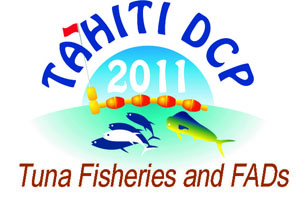Using fishers' echo-sounder buoys for remote discrimination of bycatch
1 : AZTI
Herrera Kaia - Portualdea z/g E-20110 Pasaia (Gipuzkoa) -
Espagne
2 : Institut de Recherche pour le Développement
(IRD)
* : Corresponding author
UMR 212, P.o. Box 570, Victoria -
Seychelles
Echo-sounders buoys are world widely employed in the tropical tuna purse seine fishery setting on FADs. Fishers use echo-sounder buoys to know accurately where the drifting FADs are, and also, to estimate how much fish (in terms of tons/biomass) is under the object. Echo-sounder buoys provide fishers with biomass estimations every x time (depending on their configuration) with info on the distribution of the biomass within the vertical water column (10 different layers, from 3-115 m). We have identified the potential of this tool for fish behaviour studies, as well as, for remote by-catch discrimination. This will allow us to help fishers discarding not favourable fishing FADs. Among the different potential uses of this tool, we could exalt the following ones: Studies of colonization processes; designations of best fishing practices; analyses of spatial/temporal collective fish behaviour under FADs; and, studies about fish aggregations at fine/meso/large scales (diel, week or monthly) in relation to the environment. We have made the first step to achieve those aims. For this purpose, we have identified two main study lines: acoustic discrimination and behavioural discrimination. Within the acoustic discrimination we have characterized buoys' layers as by-catch, mix layer (by-catch + tuna), skipjack or yellowfin tuna with special emphasis differentiating by-catch from tuna and skipjack from other tuna species. We also tried to calibrate current echo-sounder buoys' algorithms to provide with better estimate of biomasses. This allowed us to make behavioural discrimination where, studying layers behaviours, we discerned about best fishing practices, relationships between tunas, aggregations and environmental conditions, among others.

 PDF version
PDF version
